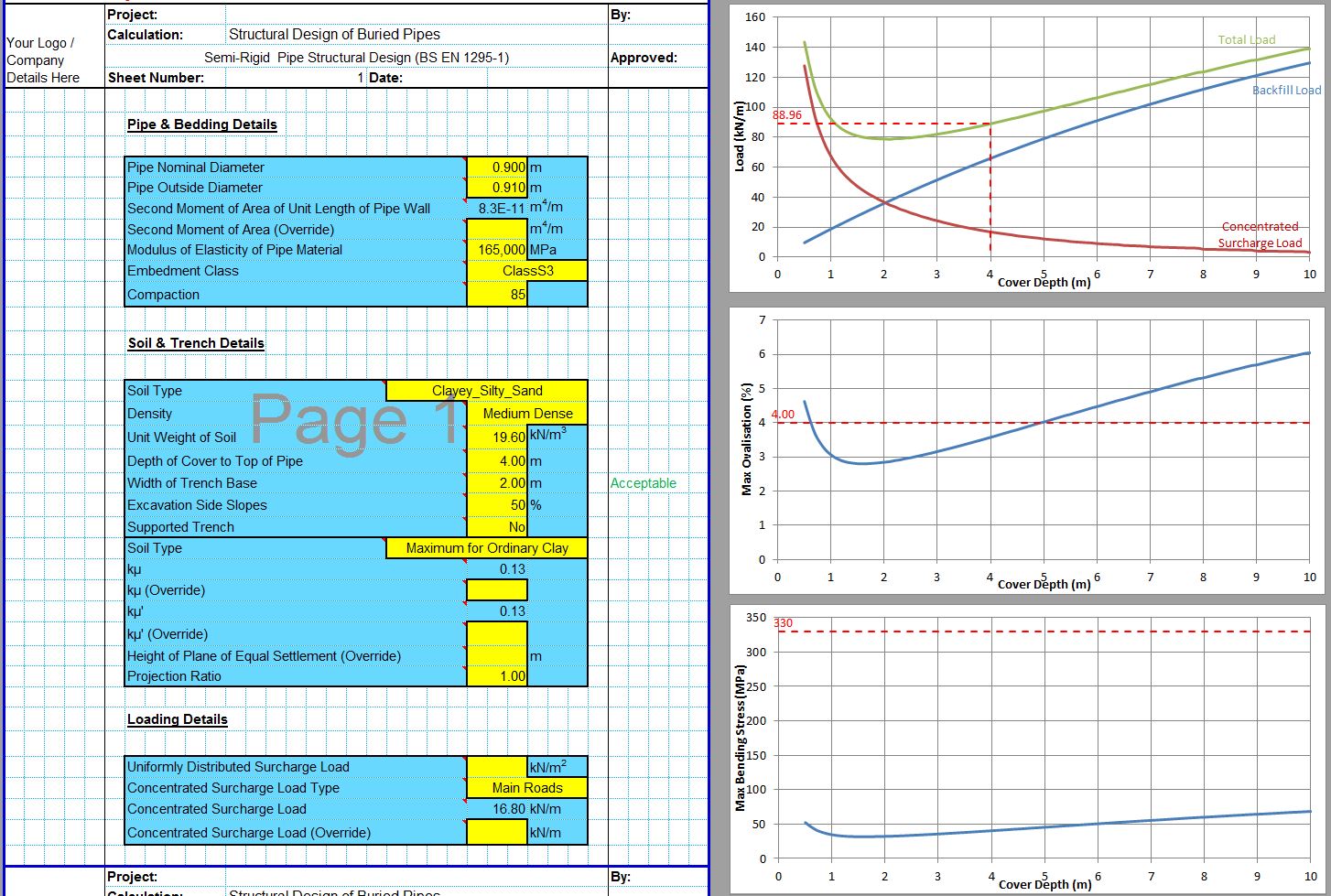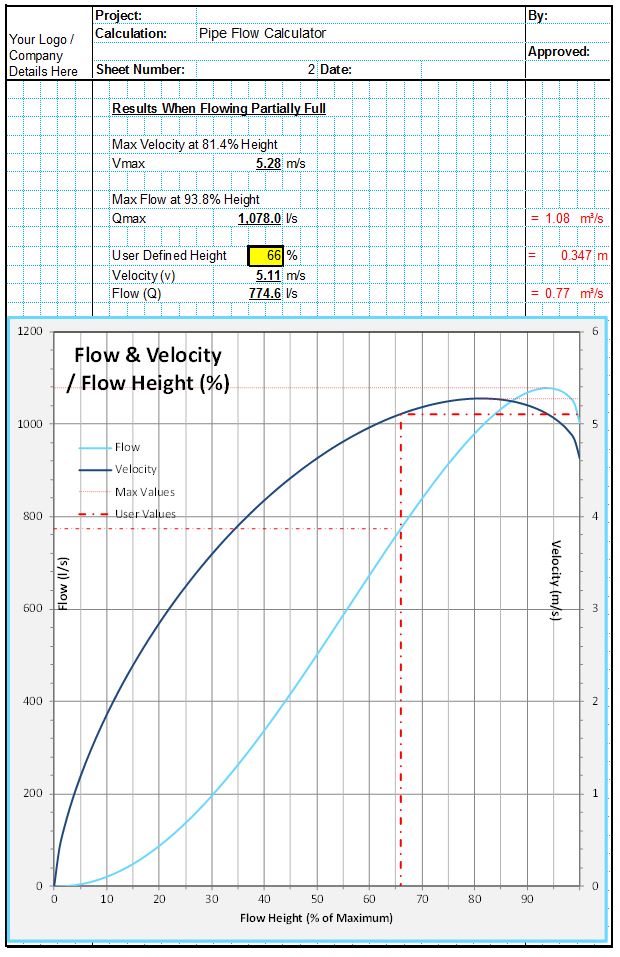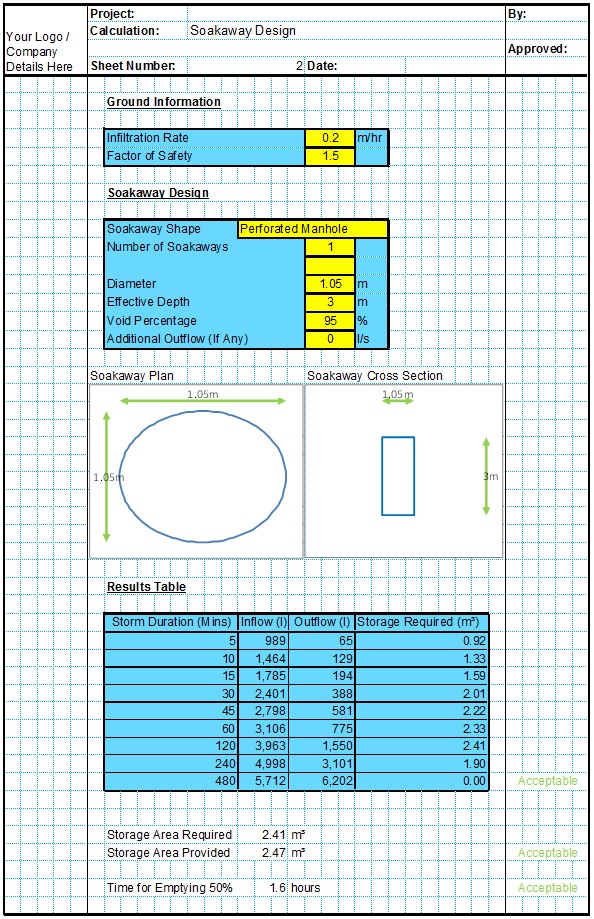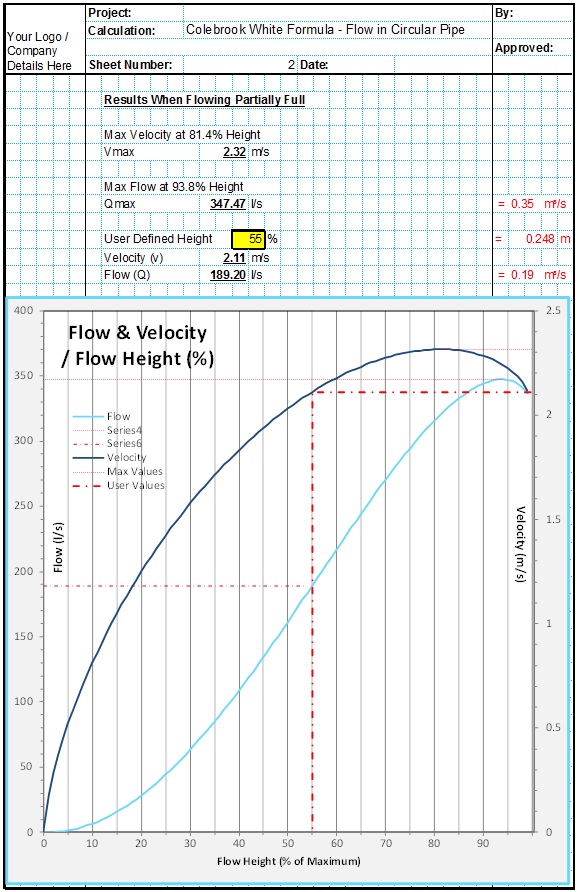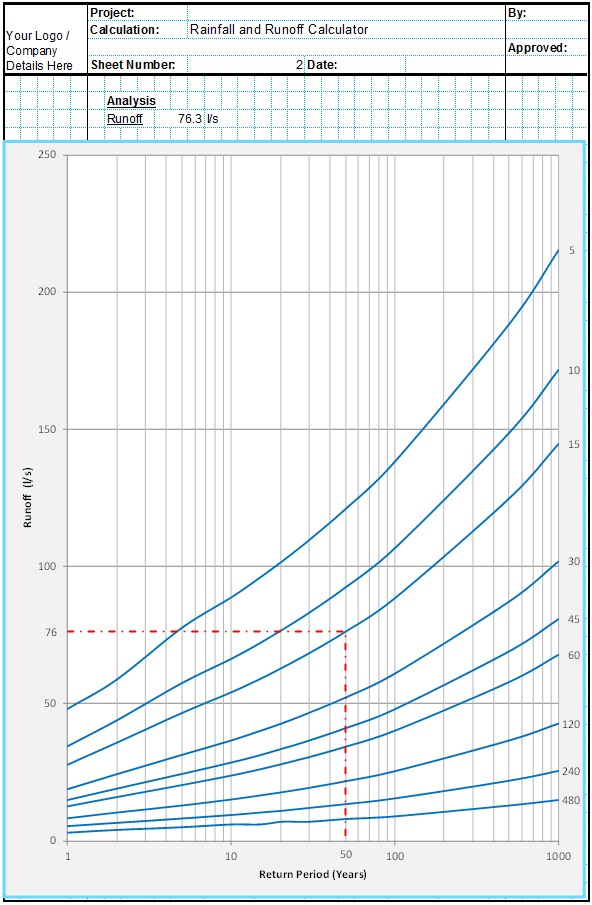The first critical design parameter is to determine to volume of runoff water which the french drain system will be expected to handle. This value can be estimated using the rational method which depends on the geographical location, catchment area, surfacing types and return period along with other factors. This simple assessment is embedded in the CivilWeb French Drain Design spreadsheet, with an option to override with a more detailed runoff assessment for larger or more critical projects.
The runoff volume will determine the required french drain width, the specification of the filter material and the perforated pipe design. For this reason it is important that the runoff volume is estimated using the most accurate methods available.
Rational Method Runoff Assessment
The design storm is the worst period of rainfall which the french drain will be expected to handle without flooding. French drains are usually provided for small, simple catchment areas such as roads and small car parks. In these cases a simple version of the rational method of runoff calculation is included in BS EN 16933-2. This consists of a simple rainfall intensity multiplied by a runoff coefficient for the catchment multiplied by the catchment area. This is generally deemed suitable for small urban catchments without serious consequences should the filter drain flood occasionally.
The spreadsheet is able to estimate this value using the rational method. The design storm runoff volume as calculated using the rational method depends on the following factors;
- Geographical Location – Each particular location has different rainfall characteristics which affect the intensity and duration of rainfall events. Ideally site specific rainfall data should be used to determine the design storm runoff. Where this information is not available typical values can be used. There are many sources of typical rainfall and runoff values for all locations within the UK. The most commonly used source for small projects such as french drain systems is the rainfall intensity maps produced BS EN 16933-2 which are reproduced at the bottom of this page. For general purposes a value of 50mm/hr is usually sufficient. BS EN 16933-2 states that a simple rainfall intensity of 50mm/hr is suitable for small catchments, up to a maximum of around 4,000m2. For small developments up to around 200ha the maps provided at the bottom of this page can be used to estimate a suitable rainfall intensity.
- Return Period – This is the average length of time between storm events which will exceed the design storm and potentially cause flooding of the french drain. Large return periods will cause the french drain design to insist on a large trench and perforated pipe which will very rarely be fully utilized. In general a value of around 1 year is often specified (which relates to around 50mm/hr) in which the french drain will be expected to flood on average once per year. This may not be acceptable if the french drain flooding would have the potential to damage property or endanger people.
- Catchment Area – This is the plan area of land which will drain into the french drain. This can be estimated from construction plans or even from Google Earth.
- Surfacing Types – Different surfacing types have different runoff coefficients. The runoff coefficient describes how much of the rainfall which lands on a surface is not absorbed or diverted and is able to runoff into the french drain system. This value varies from very high (0.8-0.95) for roofs and hardstanding areas of concrete or asphalt, to low (0.3-0.5) for grassed areas and unsurfaced areas. Where a single catchment contains a variety of surfacing types an average value can be used. Detailed guidance on choosing a suitable runoff coefficient are included on our Rational Method Runoff Coefficient post.
Detailed Runoff Assessment
In some cases the project will require a more detailed runoff evaluation. The CivilWeb French Drain Design spreadsheet allows the user to override the simple rational method calculation with the results of a more detailed assessment undertook outside of the spreadsheet.
These issues are discussed in detail in the Design Guide provided with the CivilWeb Rainfall & Runoff Calculator spreadsheet. There are many different detailed methods for calculating runoff volumes, many of which are included in the CivilWeb Rainfall & Runoff Calculator spreadsheet. This includes the Wallingford Procedure often used for small/medium sized projects and the IH 124 and ADAS 345 methods often used for greenfield development projects.
Get your copy of the CivilWeb French Drain Design spreadsheet now for only £20.
Or why not bundle with the CivilWeb Soakaway Design spreadsheet for only £5 extra?
Or save £50 by buying our full Drainage Design Suite including all our drainage design spreadsheets.
Download Free Trial Version
To try out a fully functional free trial version of this software, please Click Here or enter your email address below to sign up to our newsletter.
